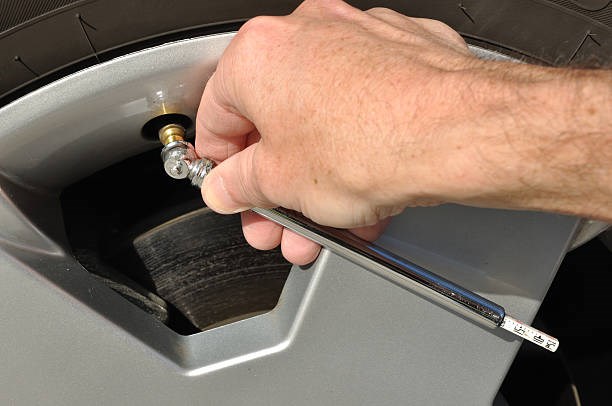Just like doctors are never far away from their stethoscopes, an air-pressure gauge is one of the most important tools of the trade for a tire technician.
Cheap and readily available, a tire gauge looks like a pen and it makes a perfect Christmas stocking stuffer. Or you can get one a little more fancy that has a hose attached to a circular gauge. Whatever the type, every driver should have one and know how to use it.
That is, unless you’re not bothered by poor fuel economy, the cost of replacing tires prematurely or, worst of all, you’re willing to run the risk of an accident caused by driving on rubber that’s not inflated to the correct air pressure.
It only takes five minutes to check all four wheels but if you keep on top of it and check that pressure at least once per month, you can save money and be safer on the road.
Kris Burdeniuk, who works in sales and service at Fountain Tire in Prince George, says he’s seen all too often what can happen when customers ignore tire pressure checks and ruin their tires, and that, he says, is totally preventable. All you have to do is be vigilant and check those tires at least once a week.
“Usually do a walkaround first thing in the morning because with this temperature fluctuation you’re always going to lose a bit of air,” said Burdeniuk. “If you’re not keeping an eye on your tires you’re going to get uneven wear and lots of underlying issues. Your car will start wandering because your tire’s low.
“If you run a tire too low, it becomes run-flat and can’t be fixed at all and you have to buy a brand-new tire. If you don’t do your due diligence it can cause an accident and be catastrophic.”
The cold snap that moved into Prince George this week brought a sudden plunge in temperature that plays havoc on tire pressure. Gas expands when it gets warm and contracts when it’s cold and the minus-28 temperature we woke up to Thursday was enough to change tire pressures.
For every 10 C drop in temperature, a tire will lose between one or two pounds per square inch (seven and 14 kilopascals) of pressure.
A tire gauge will tell you if your tires are inflated according to that recommended by the vehicle manufacturer and you can find the proper rating in the vehicle owner’s manual or on a label stuck to the inside post of the driver’s side door. There could be some variation in the recommended pressure if you tow the weight of a trailer or have a different tire size.
The air in your tires is what takes the weight of the vehicle and that affects the grip you have on the road when cornering or braking. It also affects directional stability. If you feel like your vehicle wants to pull to one side that could mean one of your tires in underinflated. A pressure too low not only increases tire wear on the sides of the tread but also leaves your tire more vulnerable to punctures and blowouts.
An overinflated tire will cause it to bow out towards the middle and result in premature wear on the centre of the tread. You’re also more likely to get a blowout which can lead to loss of control and an accident. Overinflation affects directional stability and reduces your ability to hold the road while cornering at high speed. Tires are less flexible when overinflated and that can cause damage to the car if you hit a pothole or crack or drive over a curb.
Burdeniuk says it’s best to check tire pressure in the morning before the car is driven, which causes heat buildup, and before the ambient temperature rises during the day. Always check before a long roadtrip and don’t forget to check the spare tire.
People are less likely to get out their gauges in bone-chilling cold like we’ve had this week and he says people can always drop by his shop and ask somebody to do that for them.
“We’re constantly checking air pressures here, every day we’ll probably get 10 or 15 people coming in for air pressure checks, and we don’t charge for that,” Burdeniuk said. “Air is free.”
Newer vehicles come with built-in tire pressure monitoring systems (TPMS) which will produce a warning light for drivers is a drop in tire pressure is detected. The sensor is either part of the inflation valve or it’s attached to the rim or inside the tire. Indirect systems don’t have pressure sensors mounted on the wheel and are activated by changes to the rolling circumference of the tire.
A TPMS will produce a warning light once a tire loses 25 per cent of its pressure and anything less than that won’t be detected unless the tire is checked with a gauge.


